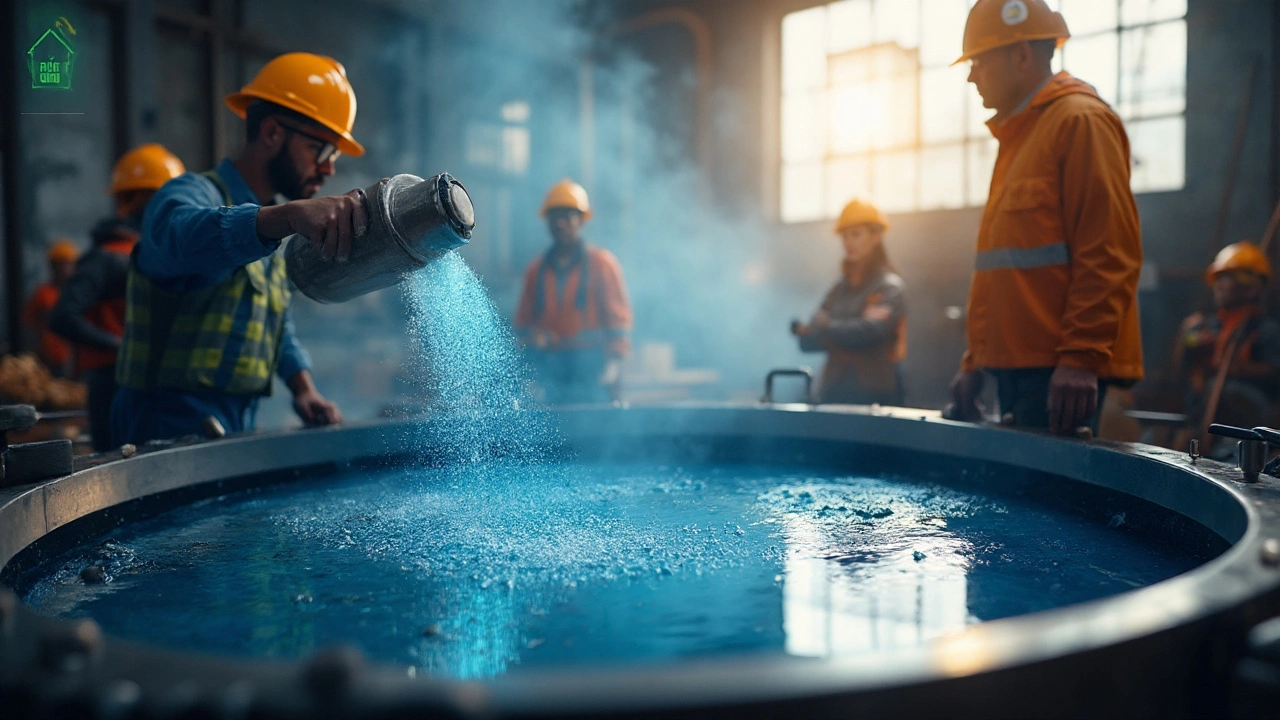
Calcium Acetate’s Role in Modern Textile Manufacturing
Explore how calcium acetate improves dye fixation, water softening, and eco‑friendly finishes in the textile industry with practical tips and a clear comparison table.
Ever wonder why some fabrics feel softer and keep their colors longer? A lot of that comes down to the chemicals used during processing. One hidden hero is calcium acetate. It’s cheap, safe, and works wonders in dye fixation, water softening, and eco‑friendly finishes.
When you add calcium acetate to the dye bath, it helps the dye molecules lock onto the fibers. The result? Brighter colors that don’t fade after a few washes. It’s especially useful for cotton, wool, and synthetic blends where traditional fixers can leave a stiff feel.
First, it softens hard water. Hard water contains calcium and magnesium ions that interfere with dye absorption. By introducing calcium acetate, you essentially neutralize those minerals, letting the dye work more efficiently. Second, it’s biodegradable and approved for use in eco‑friendly textiles, so you don’t have to worry about nasty residues.
Another perk is cost. Compared to some proprietary fixing agents, calcium acetate is a bulk commodity. That means lower expenses for large‑scale manufacturers without sacrificing quality. Plus, it works at relatively low temperatures, saving energy during production.
Start with a 0.5‑1 % solution based on total bath volume. Add it after the dye has reached its peak temperature but before cooling. Stir gently for 5‑10 minutes to ensure even distribution. If you’re treating a new fabric line, run a small test swatch first to fine‑tune the concentration.
For water‑softening, mix calcium acetate with the pre‑wash water at a ratio of 1 g per 10 L. This step removes mineral buildup that can cause uneven dye spots. After dyeing, a quick rinse with a mild acid (like vinegar) helps lock in the color and remove any excess acetate.
Here’s a quick comparison table you can print out:
| Property | Calcium Acetate | Traditional Fixer |
|---|---|---|
| Cost | Low | Medium‑High |
| Eco‑rating | Biodegradable | Often non‑biodegradable |
| Temperature Needed | Below 80°C | Above 90°C |
| Softness Effect | Improves | Neutral |
Notice how calcium acetate checks more boxes for sustainability and cost. That’s why many factories are swapping out older chemicals for this simple salt.
If you’re new to using calcium acetate, keep an eye on pH. The solution works best around neutral pH (6‑7). A slight shift can affect dye uptake, so a quick pH test before adding the chemical can save you a lot of rework.
Finally, store calcium acetate in a dry, cool place. It absorbs moisture easily, which can clump the powder and make dosing tricky. A sealed container with a desiccant packet does the trick.
In short, calcium acetate is a versatile, affordable, and eco‑friendly option for modern textile production. Whether you’re aiming for vivid colors, softer fabrics, or greener processes, it’s worth a try. Give it a test run on your next batch and see the difference for yourself.

Explore how calcium acetate improves dye fixation, water softening, and eco‑friendly finishes in the textile industry with practical tips and a clear comparison table.